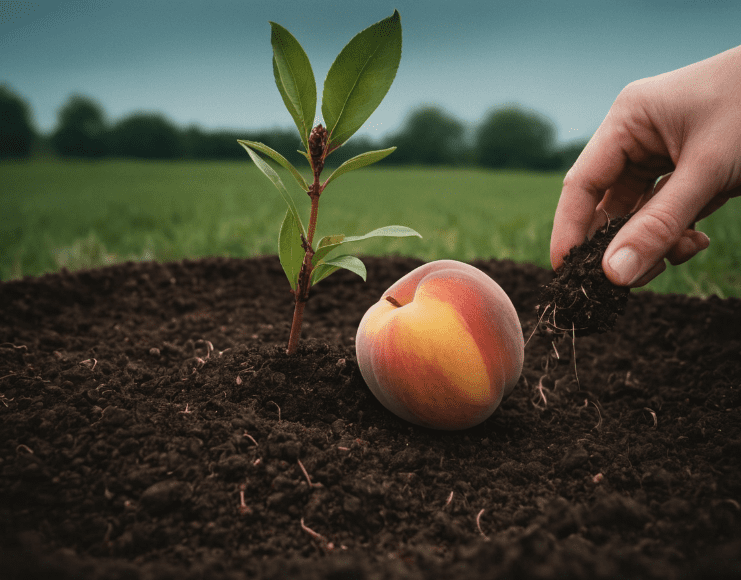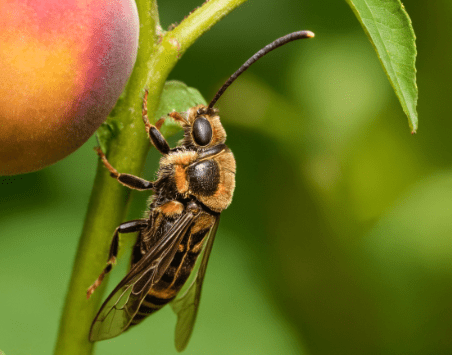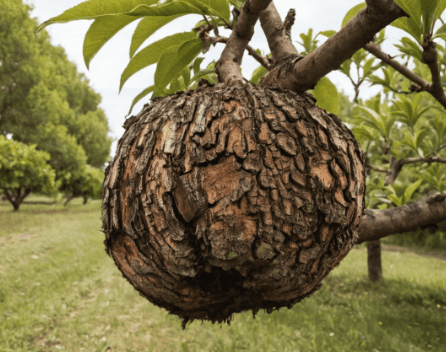
Can you plant a peach seed directly in the soil, or do you need to start it inside?
It’s best to plant a peach seed inside first. This helps create a suitable environment for it to grow. After the seedling is strong and grows a few inches, you can move it outside. Find a good spot in your garden for it.
Have you ever eaten a tasty peach, apricot, or nectarine and considered growing your fruit tree from the seed? If so, you’re in luck! Planting a peach seed is easier than you think. You can have a lovely tree in your backyard with patience. Let’s look at the steps to turn that peach pit into a strong tree.
Why Grow a Peach Tree from a Seed?
It is not only inexpensive but also incredibly satisfying to grow a peach tree from seed.. It lets you:
- See the Full Growth Cycle: Watch how a seed becomes a fruit tree.
- Grow Different Fruit: Trees from seeds might make peaches that are a bit different from the fruit they came from.
- Have Fun with Gardening: It’s a great project for beginners and skilled gardeners.
Materials Needed
Before you plant your peach seed, make sure you have all the needed materials and tools.
- Peach Seed: A fresh seed taken from a ripe peach.
- Large Container: Choose a pot deep enough to hold the growing tap root.
- Soil-Free Potting Mix: A clean medium that is free from pests and diseases.
- Growing Mix: A nutrient-rich blend that helps seedlings grow.
- Sphagnum Moss or Vermiculite: Keeps moisture during the cold treatment.
- Warm Environment: Important for the seed’s germination after stratification.
- Cold Treatment Supplies: Needs like a plastic bag and refrigerator to create cold dormancy.
- Tool to Crack the Seed: A nutcracker or any tool to crack the seed gently, if needed.
Seed Preparation
Proper care of the peach seed is important for good germination.
Cleaning the Peach Seed
- Clean the Peach Pit: Gently wash the peach pit to get rid of any leftover fruit.
- Soak in Bleach: Place the pit in a weak bleach solution for about 5 minutes to kill any fungi.
- Rinse Well: After soaking, wash the seed with clean water.
Cracking the Seed
- Crack the Seed (Optional): Take a nutcracker and gently crack the hard outer shell (endocarp) without hurting the inner seed. This practice, called endocarp cracking, can help germination go faster, but you need to be careful.
Understanding the Germination Process
Peach seeds need special conditions to grow well.
Cold Stratification
- What is Cold Stratification? It’s a process that copies winter conditions. This tells the seed to start growing.
- How to Stratify: Put the clean seed in a plastic bag with moist sphagnum moss, vermiculite, or moist sand.
- Seal the bag and keep it in the refrigerator for 8 to 12 weeks.
- Keep the temperature between 34°F and 42°F (1°C to 5°C).
Importance of Cold Conditions
- Breaks Dormancy: The cold stratification period helps wake the seed from dormancy.
- Prevents Early Sprouting: It makes sure the seed does not sprout during bad weather.
Planting Conditions
To help your peach seed grow well, you need to think about the best planting conditions.
- Cold Stratification: Peach seeds need cold storage to wake up from resting. This copy the natural winter and can be done in the fridge. Put the seed in a plastic bag with damp sand and keep it in the fridge for 8 to 12 weeks.
- Timing and Frost Date: Plant the seed after the last frost in your area. This way, the young plant will not get hurt by sudden cold weather.
- Soil Requirements: Pick a spot with good soil that drains well. Good drainage stops root rot and helps the plant grow strong.
- Moisture Control: Keep the soil moist, but don’t water too much. Just the right amount of moisture is needed; the soil should be damp but not soggy.
- Sunlight Exposure: Find a sunny spot but also look for a sheltered area to protect the young plant from strong winds.
- Micro-Climates: Use areas in your garden that feel different. Places near trees or on slopes can keep your peach tree safe and provide a better spot for it to grow.
- Consulting Tree Nurseries: If you’re unsure about your local weather, ask tree nurseries for advice that fits your area.
Step-by-Step Planting Guide
Let’s go through how to plant your peach seed.
Planting the Stratified Seed
- Prepare the Container: Fill the large container with the soil mix you made.
- Plant the Seed: Bury the seed about 1 to 2 inches deep.
- Water Gently: Wet the soil without making it too wet.
- Provide Warmth: Put the container in a warm place to help it grow.
Caring for the Seedling
- Sprouting: In a few weeks, you should see the seed sprouting with small leaves called cotyledons or seed leaves.
- Acclimation: Slowly introduce the seedling to outdoor conditions, a process called acclimation.
- Transplanting: When the seedling is strong enough and after the last frost date, move it to its new spot.
Understanding the Tap Root
- Tap Root Development: Peach trees grow a strong tap root. This root helps them get water and nutrients.
- Planting Depth: Make sure the soil is deep enough. This way, the tap root can grow freely.
Growing Tips
To help your peach tree grow well, think about these important tips.
Ensuring Excellent Drainage
- Prevent Root Rot: Make use of well-draining soil. to keep roots healthy.
- Avoid Overwatering: Keep the right amount of moisture by only watering when the soil’s top inch is completely dry
Protecting Against Pests and Diseases
- Common Pests: Watch for the peach tree borer. It can hurt the trunk and roots.
- Disease Prevention: Be alert for brown rot and use treatments when needed.
- Regular Inspection: Finding problems early can save your tree from big damage.
Fertilizing
- Balanced Food: Use regular fertilizer or a product like Miracle Grow to give needed nutrients.
- When to Apply: Fertilize in early spring and mid-summer for the best results.
Pruning Your Peach Tree
- Why Prune? Pruning helps plants grow strong and produce more fruits.
- When to Prune: Do it in late winter or early spring, before new growth starts.
- How to Prune: Cut away dead or sick branches. Also, thin out crowded parts to let light in.
Grafting and Cross-Pollination
Improve the fruit quality of your peach tree by using grafting and cross-pollination.
Grafting Methods
- What is Grafting? It is when you join a branch from a wanted type (scion) to the tree’s rootstock.
- Benefits: This makes fruit the same as the scion type and can also help fight diseases.
Cross Pollination
- Self-Pollinating Trees: Most peach trees can fertilize themselves, but cross-pollination can produce more fruit.
- Planting Multiple Trees: Think about planting several types to help with cross pollination.
Understanding Micro-Climates
- Micro-Climates: These are small places where the weather is different from nearby areas.
- Using Micro-Climates: Plant your peach tree on rolling hills or close to tree cover to make better conditions for it.
Pest and Disease Management
Take care of your tree. Manage pests and diseases well to keep it healthy.
Peach Tree Borer

- Identification: Check for holes and sap coming out of the trunk.
- Control Methods: Use collars to protect and apply proper treatments.
Brown Rot

- Symptoms: Brown, rotting fruit and dying flowers.
- Prevention: Cut away the bad parts and use fungicides when needed.
Planting Conditions in Different Climates
Change your planting method based on the weather in your area.
Cold Climates
- Refrigerator Stratification: This is important in places that do not have cold winters.
- Walk-In Fridge Alternative: If you can use a walk-in fridge, it can work for stratification.
Humid Climates
- Moisture Control: Higher humidity can cause mold problems. Make sure there is good air flow.
- Well-Draining Soil: Important to stop root problems.
Documenting Your Journey
Share your peach-growing experience with others.
Using Visual Aids
- Photography: Take photos of each step, from planting to growing fruit.
- Educational Tool: Picture aids can help others learn from your way.
Social Media Tagging
- Connect with Community: Share news on sites like Instagram or Facebook.
- Use Hashtags: Tagging on social media can help you reach more people and get useful tips.
Harvesting Your Peaches
Now that you have cared for them for years, it’s time to enjoy what you have worked hard for.
When to Harvest
- Ripeness Indicators: Peaches are ready when they feel soft and smell sweet.
- Taste Test: The best way to check is to taste one!
Storing and Using Your Peaches
- Immediate Enjoyment: Fresh peaches are best to eat right away.
- Keeping Them: You can can, freeze, or make jams to enjoy them all year.
Conclusion
Using seeds to grow a peach tree is a wonderful journey that connects you to nature. First, prepare the peach seed and keep it safely until late fall. It’s important to give it the right care at the base of the tree. Then, watch as it grows into a small peach seedling and later into a full-grown tree with fruit.
Every step is a great experience. So next time you eat a peach, save the pit and start your own peach-growing adventure!
Now that you have all the knowledge, are you set to plant your own peach seed and see it grow?


























